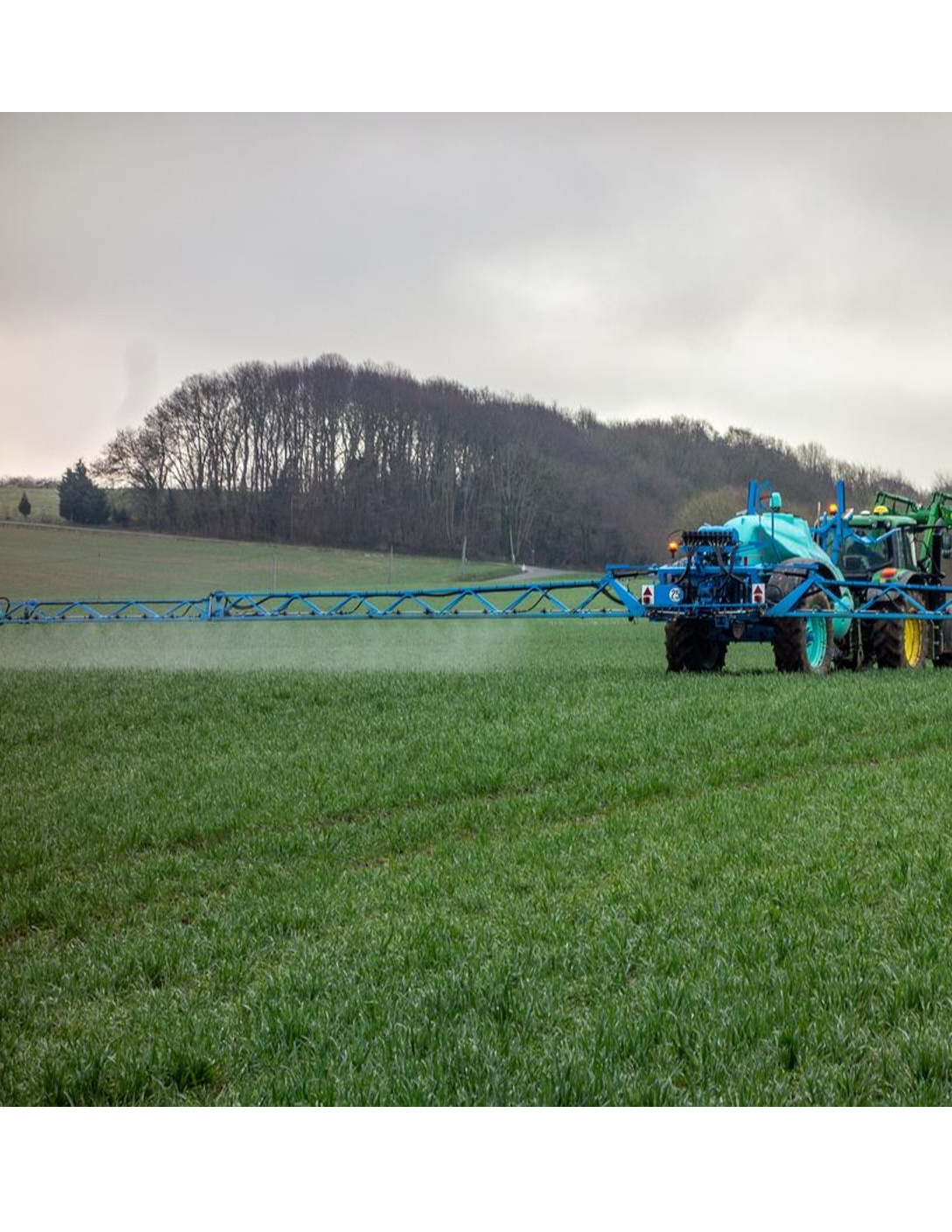Written by Bhanu Agarwal, Staff Writer for Save The Water™ | November 15th, 2017
Times of the year when water bodies typically exhibit the most visible response to water quality problems is during spring through early fall. Algal blooms can be dramatic and are a result of excess nutrients from fertilizer, wastewater and stormwater runoff. These water bodies coincide with lots of sunlight, warm temperatures, and shallow, slow-flowing water. Improvements in the water quality of many freshwater and most coastal marine ecosystems requires reductions in both nitrogen and phosphorus inputs. The need to reduce these anthropogenic nutrient inputs to aquatic ecosystems in order to protect drinking-water supplies and to reduce eutrophication, includes the proliferation of harmful algal blooms and “dead zones” in coastal marine ecosystems has been widely recognized.
Pollutants from Fertilizers
The Gulf of Mexico is low in oxygen and continuous reduction will result in a decrease of marine life. These hypoxic zones are primarily caused by human activities where an excess of agricultural nutrients and wastewater treatment flow downstream and into surface waters, stimulating harmful algae. California’s Santa Clara County closed a reservoir and a lake to outdoor recreation as region’s usual supply system has been disrupted by algae.4
The runoff water from agricultural farms into lakes and ponds contains pollutants like phosphorus and nitrate. These pollutants result in algal blooms which uses the majority of oxygen in the water, endangering the livelihood of fish and other wildlife. The algae promptly flourishes when exposed to a minute amount of any such pollutant.1
Emerging need to Control these Pollutants
Support from farmers and a new infrastructure needs to be invested in to catch the phosphorus. To solve this blooming danger, researchers are developing a tool to fight against the pollutants.1 Eleven states that send the majority of the water to the Mississippi River set advantageous goals to reduce nitrate and phosphorus pollution in the Gulf of Mexico. The only way to reduce phosphorus in this water mass is to control runoff from all sources—farms, sewage systems and leaking septic tanks. Agriculture leaders within Ohio say they are committed to doing that and research is underway to see what works best.3 The farm industry is heavily promoting the idea of using the right amount of fertilizer at the right time and place. Ohio’s biggest and most influential agriculture groups are putting money into research on how to contain phosphorus on the fields.
Practices they are looking at are injecting fertilizer into the ground, rather than spreading it in pellets on the fields, and planting cover crops such as legumes to help soil absorb the phosphorus. Other research being done to control pollutants are being carried out by Laura Christianson She is an assistant professor of water quality in the Department of Crop Sciences at the University of Illinois, and an expert on woodchip bioreactors.1. Woodchip bioreactors emerges as a solution, as woodchip filled trenches help remove nitrate from drainage water. The team also tried to remove phosphorus by adding “P-filter” to trap the fertilizer derived pollutant. Two types of industrial waste products in the P-filters were tested: acid mine drainage treatment residual (MDR) and steel slag. Phosphorus binds to elements such as iron, calcium, and aluminum contained in these products, removing it from the water. It can remove 80 to 90 percent of phosphorous successfully at medium flow rate. This tool could be a solution for the Gulf nitrate problem.
Another effort is being carried out by the Mississippi River/Gulf of Mexico Hypoxia Task Force who aims for a 20 percent reduction in the amount of nitrogen flowing into the Gulf of Mexico by 2025.2 The study estimates a 59 percent reduction rate in the amount of nitrogen runoff that flows down the Mississippi River.
Pollutants from Manure
California produces more milk than any other state in the country. The cows also produce manure, which is widely used as a resource in fields to grow crops. Though it is a natural and sustainable cycle, the crops do not absorb all the nitrogen in the manure, and the excess runs off into surface water, causing algae bloom. San Francisco-based Sustainable Conservation, a nonprofit that works with diverse stakeholders to help clean water, air and land, is working with dairy farmers to fix this issue, but it is one component of a bigger problem.5 Nitrate-contaminated groundwater is now pervasive in agricultural areas in California such as the San Joaquin and Salinas valleys. It is a serious problem in rural communities that rely solely on wells for drinking water because it can cause health problems or even death, especially for infants and pregnant women.
Coalition Building
To combat the issue, a coalition of state and federal agencies, growers and environmental justice groups, known as the Central Valley Salinity Alternatives for Long-Term Sustainability (CV-SALTS), developed a plan to sustainably manage salinity and nitrogen in the Central Valley. A three-tiered approach to nitrate pollution is deliberated: provide safe drinking water to affected communities, stabilize the amount of nitrates in groundwater, and finally clean up groundwater. Options to clean groundwater are reverse osmosis or ion exchange. The only problem is they are time-consuming, expensive, and some are only able to process low volumes of water. Cleaning technologies would also generate a significant and costly waste stream.
Controlling Source Pollution
To control the pollution from further increase, a nitrogen management plan is introduced to every farmer. The plan inquires records of when, how much, and whether it is commercial, synthetic, or organic nitrogen that they apply.5 Farmers also report on their crop yields. There are estimates for how much nitrogen each type of crop will consume as it grows. They can calculate the difference between the two to get a general idea of how much nitrogen is left over in the soil, and can possibly leach into groundwater.
Positive results are possible with a technique called pump and fertilize. Farmers in some areas tap groundwater to irrigate their fields. If they measure the amount of nitrates in the groundwater they use, they can reduce the amount of new nitrogen fertilizer they apply to their crops.5It is an efficient, cost-effective way to clean up groundwater because the crops are removing some of the nitrogen from the water, and farmers will know not to add extra amounts.
Sustainable Conservation has been working on another possible solution to help dairy farmers reduce their contributions to nitrate pollution. Sustainable Conservation is piloting a technology that allows water mixed with manure to be put through drip irrigation without clogging the drip tape.5 Drip irrigation is generally a more precise way to get irrigation water to the roots of the plant, where it can take it up, thereby reducing runoff that can carry pollutants with it.
Results so Far
So far the effort resulted positively with an increase in crop yields because the nutrients are evenly distributed at the root zone and a reduction in water and nutrient use. While innovation is happening on a small scale, research is also continuing to help guide the agricultural industry’s participation in reducing nitrate and to inform possible enforcement down the road. Crops are able to take up 80 percent of the nitrogen applied, meaning 20 percent would still be running off, according to Harter’s report.5 With this being said, we need to find more effective ways to reduce the issue of pollutants contaminating freshwater sources.
References
- University of Illinois College of Agricultural, Consumer and Environmental Sciences, July 31, 2017, Science Daily. New system could remove two water pollutants from agricultural fields, https://www.sciencedaily.com/releases/2017/07/170731134128.htm
- Ann Perry, January 29, 2015. Measuring phosphorus loss from Midwest crop fields, https://phys.org/news/2015-01-phosphorus-loss-midwest-crop-fields.html#nRlv.
- John Seewer, August 11, 2014. Farms are focus of studies on drinking water toxin, https://phys.org/news/2014-08-farms-focus-toxin.html#nRlv.
- Sara Jerome, August 1, 2016. Algae, Not Drought, Has California District Tapping Backup Supply, http://bit.ly/2xr1wkw.
- Erica Gies, August 31, 2017. Why California’s nitrate problem will take decades to fix, https://www.newsdeeply.com/water/articles/2017/08/31/why-californias-nitrate-problem-will-take-decades-to-fix





